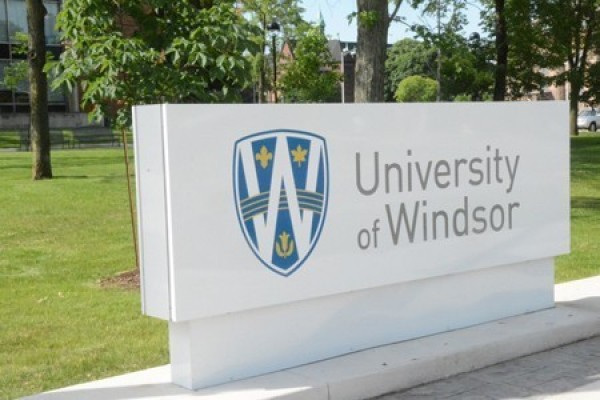 The CFI funded scanner will be used in various areas of biological and molecular research at UWindsor, including Phil Karpowicz’ work on circadian rhythms and how they affect an animal’s ability to heal injured tissue.
The CFI funded scanner will be used in various areas of biological and molecular research at UWindsor, including Phil Karpowicz’ work on circadian rhythms and how they affect an animal’s ability to heal injured tissue.
A $100,000 Canada Foundation for Innovation (CFI) grant will help UWindsor purchase a sophisticated scanner that creates high resolution digital images of animal tissue, aiding in the study of how cells heal damaged tissue.
Various areas of biological and molecular research at UWindsor will use the new equipment, including Phil Karpowicz’ work on circadian rhythms and how they affect an animal’s ability to heal injured tissue. The circadian rhythm is the body’s response to the 24-hour clock and the change from day to night.
The CFI funding was granted for Dr. Karpowicz’s research, Quantitative Tissue Imaging for Physiological and Genetic Analysis.
“All life on the planet has evolved under these conditions of light and dark, and so we have molecular clocks inside our cells to keep track of the time of day,” says Karpowicz. “The circadian clock dictates our sleep patterns and other physiological behaviour like our digestion, metabolism, and healing.”
Karpowicz specifically studies the ability of intestinal stem cells to heal injured intestinal tissue. Stem cells are the cells that divide to replace cells in the body’s tissues and organs.
When the body endures such stresses as food poisoning, Karpowicz says the immune system responds by activating stem cells to start dividing and replicating in order to replace damaged and dead cells.
“It turns out, this is a circadian process,” says Karpowicz. “The healing happens on a 24-hour cycle with peaks and troughs of stem cell activity.”
For circadian rhythm research, multiple tissue samples must be taken from multiple animals around the clock, and Karpowicz says this generates a tremendous amount of samples to study.
“Looking at all these slides under a microscope eight hours a day is laborious and you may start missing subtle differences. This new equipment automates the process by quickly scanning slides mounted with tissue samples,” he says. “It is fast and can precisely measure and report any variations.”
The high resolution digital image archives can also be stored and referenced for years after the samples are collected, whereas the slides currently used will last, typically, up to a year.
The scanner will also open up research opportunities to study the effects of environmental stresses on fish stocks and invasive fish at a molecular level.
“This infrastructure will benefit researchers on campus doing chemical screening, toxicology screening and environmental research, and ultimately it will enable large-scale experiments that previously could not be performed,” says Karpowicz.
Karpowicz studies the intestines of fruit flies and mice and plans to start experimenting on fish as well. He also grows organoids out of stem cells - three-dimensional mini-versions of an organ containing all the cell types of that organ.
“These mini-organs allow you to study animal tissues around the clock, without having the animal in the lab,” says Karpowicz.
By studying how time of day affects the healing of injured tissues through stem cells, Karpowicz says researchers can advance regenerative medicine by helping develop therapies and possibly finding ways to avoid illness in Canada and worldwide.
Broadly speaking, Karpowicz says the environment is more than just chemicals, it is also light - the absence of light and the presence of light.
“Our human life style these days creates a lot of opportunity for sleep disruption, with shift work, frequent travel and constant staring at our gadgets emitting blue light,” says Karpowicz. “This is not the way humans have evolved and as a consequence our health suffers, so this is an important area of study."
